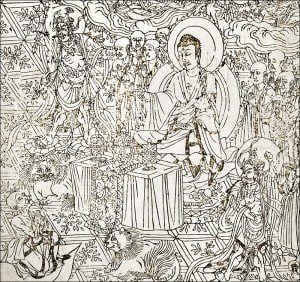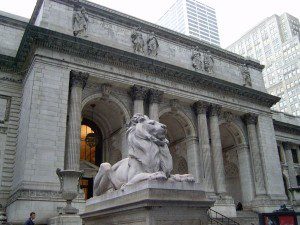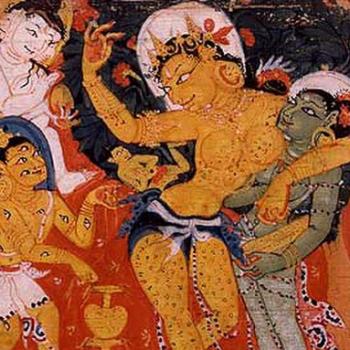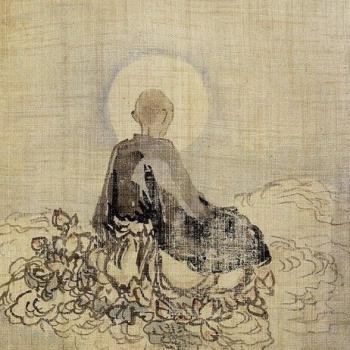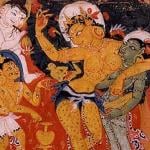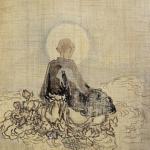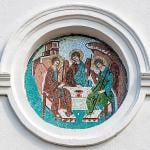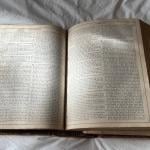It was on this day, the 25th of June in 1900 that the Daoist monk Wang Yuanlu, while trying to salvage ancient religious artwork in one of the ruined Caves of the Thousand Buddhas near Dunhuang, stumbled upon a long hidden door.
He opened it, and that door opened into another cave now known as the renowned “Library Cave.” In that Library Cave he found a gigantic archive of documents. The archeologist Aurel Stein who was the first European to see the collection in 1906, described what he saw.
“Heaped up in layers, but without any order, there appeared in the dim light of the priest’s little lamp a solid mass of manuscript bundles rising to a height of nearly ten feet, and filling, as subsequent measurement showed, close on 500 cubic feet. The area left clear within the room was just sufficient for two people to stand in.”
There were 1,100 bundles of scrolls and over 15,000 books in the collection, dating from the fifth to early eleventh centuries of our common era. While they primarily touched on Buddhism, the collection also contained documents relevant to Daoism, Confucianism, Nestorian Christianity, Judaism, Manichaean, and even non-religious areas including astronomy, geography, and music.
Of particular popular appeal is the oldest printed book in the world. It’s a copy of the Buddhist Diamond Sutra.
It is near impossible to emphasize the importance of this collection, joining and arguably surpassing the importance of other early twentieth century discoveries such as the Dead Sea Scrolls and the Nag Hammadi Library. The sheer size of the collection, some 60,000 manuscripts, printed documents, and fragments makes it a constantly unfolding revelation for scholars.
Eventually under the direction of Luo Zhenyu, the bulk of the documents were moved to Beijing where today they’re housed at the National Library. However, not before a large number of documents were acquired by various Western scholars, most notably Aurel Stein and Paul Pelliot. Some of these near random selections have passed into private hands, but the majority found homes at the British Library and the Bibliotheque national de France.
Most important for contemporary scholarship an international project to digitize the documents scattered in libraries in both East and West has been begun by the International Dunhuang Project.
So, today calls for celebration, songs, and dancing. To help here is some music from a score found at Dunhuang:


